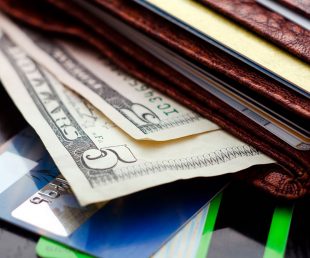Let’s say you have $50,000 in student loan debt and $5,000 in credit card debt. If you get a big tax refund this year, which one should you put the extra money towards?
The short answer is that credit card debt should typically be your top priority, but as with most personal finance topics, there’s no one-size-fits-all answer. If you find yourself in the fortunate position of having extra cash to use toward debt repayment, here’s a rundown of what you should consider.
Good debt vs. bad debt
Many financial planners, myself included, divide debts into two main baskets: good debts and bad debts. I’d even go so far as to break it into three tiers: great, good, and bad.
Great debts refers to debts that are relatively cheap (low-interest) and are used to acquire things that are likely to increase in value over time. Think mortgages: Not only is mortgage debt generally low-interest compared with other types of debt, but it allows you to buy an appreciating asset — a home. In fact, mortgages are such a useful form of debt that many financial planners advise clients to use a mortgage when buying a home even if they can afford to pay cash for the purchase. With their low interest rates and long repayment terms, mortgages give you the flexibility to put your available cash to productive uses such as investing for retirement.
Good debts have two main characteristics: They are relatively low-interest and allow you to acquire an asset that is useful but unlikely to gain value. An auto loan at a reasonable interest rate is an example of a potentially good debt, because it allows you to buy a car, which gets you to and from work. I’d also put student loan debt into this category. So long as you complete your degree, you’ll have an asset that increases your earnings power for the rest of your life.
Bad debts have high interest rates, are not used to acquire a useful asset, or both. Credit card debt is the prime example. The average credit card APR in the U.S. is about 18% right now — roughly four times the average mortgage rate.
The point is that when you have extra cash to pay down debt, it’s typically a good idea to start with the “bad debt” category. That’s why a credit card balance should typically be your first priority.
Interest rate considerations
Perhaps the most obvious consideration in deciding which debt to pay off first is the interest rate you’re paying on each.
In other words, if your student loans carry about 6% interest, and you have credit card debt at a 24% APR, deciding where to funnel your extra money should be a no-brainer. As a general rule, it’s a smart idea to start with your highest-interest debts and work your way down.
For example, let’s say you have a mortgage at 4% interest, an auto loan at 7.5%, student loans at 6%, and a small credit card balance at 18%. In this case, any money you have for additional debt repayment (after making each loan’s minimum payment, of course) should first be used to extinguish your credit card debt. If that’s done, and you still want to use your additional money to pay down debt, your auto loan could be the smart way to go, as that form of borrowing is more expensive to you than either of the others on a dollar-for-dollar basis.
Where it gets a bit less clear is when you have promotional APR deals with your credit cards. If you have $5,000 in credit card debt, but your account has a promotional 0% APR for the next 18 months, it can be a little easier to justify paying more towards your student loans. These situations should be evaluated on a case-by-case basis, but the general rule is that if and only if you will be able to pay the credit card debt off before the higher interest rate kicks in, it’s fine to go ahead and use your extra cash for other forms of debt repayment like student loans.
Different types of loans affect your credit score differently
Another important thing to mention is the effect of different types of debt on your credit score. There are two main types of debt you can have: revolving debt and installment debt.
Credit card debt is an example of revolving debt. Revolving debt, in plain English, is a credit line that you can choose to use or not use and that doesn’t have a set repayment term. On the other hand, student loans are a form of installment debt — that is, you make a certain monthly payment and your loan will be fully repaid in a certain number of months. (Note: With income-driven repayment and forgiveness programs, student loans are a bit more complex than most other types of installment loans, but they’re still in the same general category.)
When it comes to your credit score, your debts are included in the “amounts you owe” category, which makes up 30% of your FICO® Score. This includes information such as your credit card balances relative to your limits and your installment loan balances relative to your original principal.
All other things being equal, installment debts are typically looked at more favorably by the FICO formula than revolving debts. In other words, a $10,000 student loan that you still owe $9,900 on will look better for scoring purposes than a $10,000 credit card that’s almost maxed out.
By prioritizing credit card repayment, not only could you end up saving yourself lots of money on interest, but you could potentially boost your credit score faster as well.
Will you qualify for loan forgiveness?
As a final thought, if you anticipate qualifying for student loan forgiveness in any form, it’s generally not a good idea to pay your loans down any faster than you’re required to. To name the most common examples of this:
- If you have Federal Direct Loans and work for 10 years in a public service occupation while making payments on your loans, you may qualify for Public Service Loan Forgiveness, or PSLF.
- If you teach for five consecutive school years in a low-income school, you can potentially get up to $17,500 of your student loans forgiven.
- If you are repaying your loans via an income-driven repayment plan like Pay As You Earn or Income-Based Repayment, any remaining balance is automatically forgiven after 20-25 years of payments, depending on your repayment plan and type of loan.
In most cases
The bottom line is that in most cases, paying off credit card debt is a better financial move than paying extra towards student loans. However, as with most financial questions, there’s no perfect answer here. For example, maybe you have low or even no interest on your credit card debt and are on track to pay it off in full before the promotional period runs out.
That said, in most cases, it’s difficult to justify paying down your student loans any faster than you have to if you have outstanding credit card debt.
.
This article was written by Matthew Frankel, CFP from The Motley Fool and was legally licensed through the NewsCred publisher network. Please direct all licensing questions to legal@newscred.com.
Santander Bank does not provide financial, tax or legal advice and the information contained in this article does not constitute tax, legal or financial advice. Santander Bank does not make any claims, promises or guarantees about the accuracy, completeness, or adequacy of the information contained in this article. Readers should consult their own attorneys or other tax advisors regarding any financial strategies mentioned in this article. These materials are for informational purposes only and do not necessarily reflect the views or endorsement of Santander Bank.
![]()


